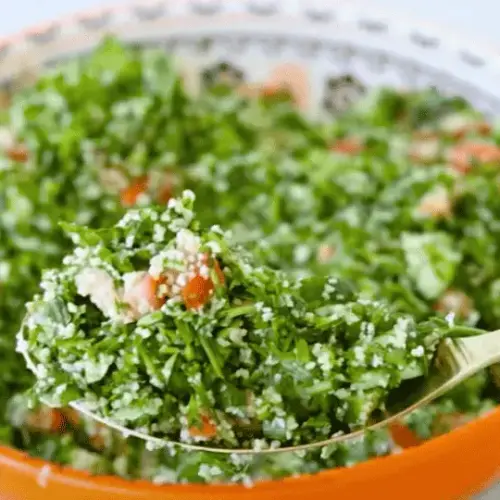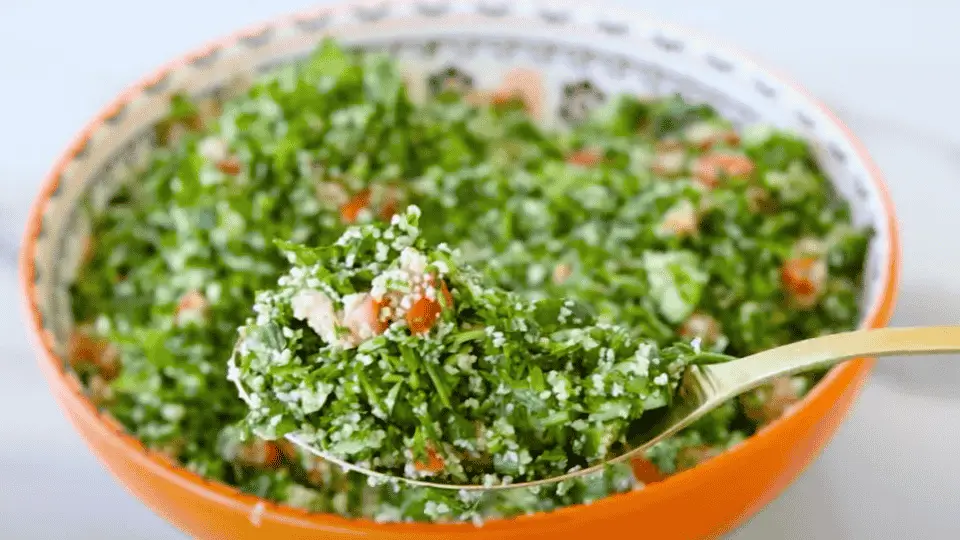Okay, friends, let’s talk Tabbouleh! That vibrant, herbaceous salad that always looks so effortlessly chic. I used to be intimidated by it, thinking it was some kind of complicated, cheffy thing. Then, one day, I accidentally over-soaked my bulgur (yes, seriously!), and in a fit of ‘I’m-not-wasting-food’ determination, I just pulsed it a little in the food processor. BOOM! Instant tabbouleh success! So, trust me, making Tabbouleh: A Fresh Salad Delight is way simpler than you think, and I’m going to show you how to nail it every single time. Get ready to impress yourself (and your guests!) with this flavor-packed, healthy dish. Think of it as your secret weapon for potlucks, BBQs, or even just a light and delicious lunch.
Mastering the Basics: Your Guide to Perfect Tabbouleh Ingredients
So, what makes tabbouleh, well… tabbouleh? We’re breaking down the key ingredients: bulgur, parsley, mint, tomatoes, cucumbers, and of course, a bright lemony dressing. This section is all about choosing the best quality ingredients and how to prepare them for maximum flavor and texture. We’ll also touch on how to substitute ingredients if needed. Ever wondered if you can use quinoa instead of bulgur? Or what kind of tomatoes work best? We’ve got you covered! It’s a game-changer for elevating your tabbouleh from ‘meh’ to ‘magnificent.’ Plus, understanding the ingredients ensures the proper moisture level which can be tricky. For a salad with similar textures but a different flavor profile, check out my tips on how to make the best ever Quinoa Salad!
Chopping Like a Pro: Tips & Tricks for Tabbouleh Prep
Confession time: I used to dread chopping all those herbs. It felt like it took forever! But fear not, because I’m sharing my top-secret (well, not really, but they’re good!) tips and tricks for speedy and even chopping. We’re talking knife skills, efficient techniques, and even a clever shortcut or two. Did you know that the way you chop your herbs can dramatically affect their flavor? This section will teach you how to chop like a pro, saving you time and frustration in the kitchen. It’s all about maximizing efficiency and minimizing tears (both literally and figuratively!).

Tabbouleh Beyond the Bowl: Serving Ideas and Variations
Tabbouleh is amazing on its own, but it’s also incredibly versatile! Let’s explore some creative ways to serve and enjoy this fresh salad. Think beyond the bowl – we’re talking wraps, pita pockets, as a topping for grilled chicken or fish, or even as a side for your favorite Middle Eastern-inspired dishes. Plus, we’ll dive into some fun variations, like adding pomegranate seeds for a pop of sweetness or a sprinkle of feta for a salty tang. It’s all about making tabbouleh your own and discovering new ways to love it. And speaking of serving inspiration, you should also try this as a side dish alongside some Lemon Herb Roasted Chicken!

Tabbouleh
Ingredients
- 1 cup fine bulgur wheat
- 2 cups fresh parsley finely chopped
- 1 cup tomatoes diced
- 1 cucumber diced
- 3-4 green onions finely chopped
- ¼ cup fresh lemon juice
- ¼ cup olive oil
- Salt and pepper to taste
Instructions
- In a small bowl, soak the bulgur wheat in warm water for about 10 minutes or until it softens. Drain any excess water and fluff with a fork.
- In a large mixing bowl, combine the parsley, tomatoes, cucumber, and green onions.
- Add the bulgur wheat to the vegetables and mix gently.
- Drizzle with lemon juice and olive oil, then season with salt and pepper to taste.
- Toss the salad until everything is well combined.
- Chill in the refrigerator for at least 30 minutes to allow the flavors to meld together before serving.
Notes
✔ For extra flavor, add a pinch of ground cumin or sumac to the dressing.
✔ Chill before serving for the best taste and texture.
✔ Pair with hummus, falafel, or grilled meats for a complete Mediterranean meal.
✔ Store leftovers in an airtight container in the fridge for up to 3 days.
FAQ: Everything You Need to Know About Tabbouleh
Can I make tabbouleh ahead of time?
Yes! Tabbouleh tastes even better after the flavors have had time to marinate. Prepare it a few hours before serving, or even the night before, and keep it refrigerated.
Is tabbouleh gluten-free?
Traditional tabbouleh is made with bulgur wheat, which contains gluten. However, you can make a gluten-free version by substituting the bulgur with quinoa or rice.
How long does tabbouleh last in the fridge?
Tabbouleh is best eaten within 2-3 days of making it, as the vegetables may lose their freshness after that. However, it will stay safe to eat for up to 5 days when stored in an airtight container in the fridge.
Can I add other vegetables to my tabbouleh?
Absolutely! Feel free to experiment by adding vegetables like bell peppers, radishes, or even a little avocado for extra flavor and texture. Just keep the balance of flavors in mind to maintain the salad’s freshness.
What can I serve with tabbouleh?
Tabbouleh pairs beautifully with hummus, grilled meats, falafel, or as part of a Mediterranean mezze platter. It’s also a great accompaniment to seafood dishes or a fresh summer picnic.
Final Thoughts
So there you have it! Tabbouleh: A Fresh Salad Delight is officially demystified. From mastering the ingredients to chopping like a pro, you’re now equipped to create a truly stunning and delicious salad. Remember, cooking should be fun and not stressful. Don’t be afraid to experiment, tweak the recipe to your liking, and most importantly, enjoy the process!
This salad is all about fresh flavors and vibrant colors, so embrace the season and use the best ingredients you can find. And don’t forget to share your tabbouleh creations with me! Tag @QuickFlavors on social media – I can’t wait to see what you whip up.
Now, go forth and make some amazing tabbouleh! I have a feeling this will become your go-to recipe for a quick, healthy, and flavorful meal or side dish. Happy cooking!


